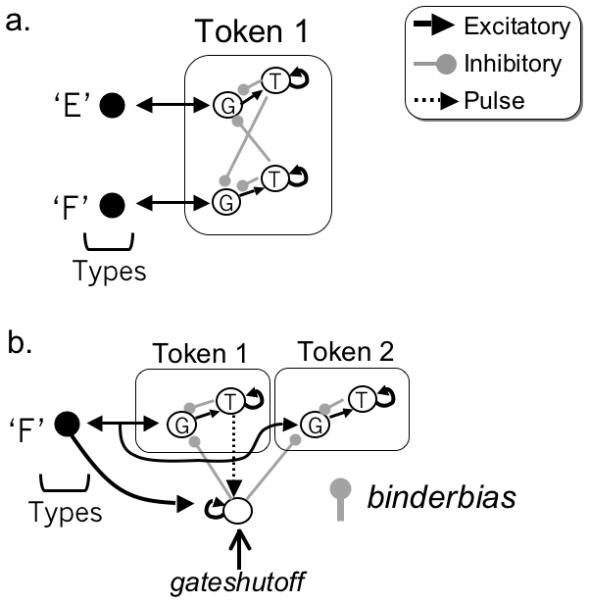Figure 21.

The complete connectivity of the binding pool, illustrating how two types compete for a single token (a) and how a type that has been encoded is prevented from being encoded a second time until it has ceased to be active (b). Also shown in the lower figure is the pattern of bias inputs to the token gates that force token 1 to complete binding prior to token 2, provided that token 1 has not already been bound. The node at the bottom of (b) implements this behavior, triggered by successful completion of token 1, it becomes active and stays so until the type node ‘F’ is no longer active. While active, it prevents gate nodes from becoming active so that ‘F’ cannot be spuriously encoded twice from a single presentation. This mechanism comes with a cost of repetition blindness. It is not shown here, but this same inhibitory node acts across the entire set of four tokens.
